Anyone on the worldwide festival circuit over the last few years knows about the crew that reps the new independent bottler out of Poland called Colours of Rum. Their eye catching shirts matching their brightly labelled rums, the rums themselves, the enthusiasm of Magde Reszke and Dominic Rudnicki (among others) when they talk and strut their stuff…well, it’s not hard to stop by and just hang out for a bit, see what they are selling and check if anything is squirrelled away under the table that might conceivably be shared. It just goes to show how much a good brand ambassador can make a huge difference in the perception of the rum she (or he) is promoting. The way they operate, it’s like they enjoy what they do immensely, an attitude which keeps me coming back to their booth, every time…and that’s priceless.
That said, I don’t want to distract from the fact that when you really get down to it, CoR is not really different from any other good independent bottler. To be sure, they chose cannily and well with their selections, and thus far they have not gone too far into the bushes, and simply concentrated on a few countries’ rums — they always release single casks — which they know are popular and will move: Jamaica and Barbados have the most, and there are also rums from Guyana, Trinidad, Fiji, and Guadeloupe. More are likely to join the stable in the future, and of late they have dipped their toes into blends and finished rums as well.
Let’s narrow our focus, though: the rum we are looking at today is a Barbados rum from Foursquare, from 2002 – and once that date clicks and you realise it’s a single cask and pot still, well, you just know it’s from the same batch of twelve barrels (out of an original twenty) of pot still distillate which Richard Seale sold to Main Rum back in 2002. Other fortunate bottlers of this rare batch of Foursquares (and I like to imagine that vendettas ensued and carpets ran rust-red in Scheer’s offices when the knives came out in the bidding war) include USA’s Holmes Cay, Royal Cane (a brand of Infinity Spirits from Amsterdam), and Nico on FB told me that the SMWS, Silver Seal, Kintra, Ultimatum and L’Esprit all issued single cask expressions from the set. Who snagged the other barrels remains unknown; perhaps we’ll be lucky enough to see them get issued in years to come, though my wallet trembles at the potential cost.
Anyway, what else? Pot still as noted, 49% ABV, 208 bottle outturn. Issued in 2022, so 20 years old, ex bourbon barrels. And that’s about all we get and all we know.
The only other rum from this background which I’ve tried is of course the Holmes Cay expression, and I liked that a lot: it was superb. This one has its differences. Here the nose opens with flowers, sweet bubble gum, candy floss, salt, olive oil, lychees, slightly sweet-sour mangoes. Ginnip, licorice, damp sawdust, cucumbers in vinegar. Noses almost delicately, hardly like a deep and heavy overproofed pot still badass at all. There are light touches of molasses, cinnamon and cardamom, but seemingly restrained from showing off the full panoply of their potential.
As for the palate, well, no surprise, it’s lovely, presenting a crisp, clear, clean, sweet, deep profile from start to finish. Anise, red licorice, leather, smoke, salt, olives, plastic, vanilla, plus candy floss again, and that’s in the first five minutes. Once it opens up, you can sense strong black tea with evaporated milk, and some tart, fruity and somewhat sharp notes – and yet the whole time, the rum remains rather delicate. Other tastes that come and go across the stage are florals, light red pepper notes, cardamom and cedarwood and allspice, moving quietly and without haste to a slow and languorous finish that’s lightly fruity, has some spices, and a few musky notes of anise, cedar, molasses and well cured leather.
The Colours of Rum selection of the same distiller’s distillate suggests a quality similarly at the tope end, compared to those I tasted already. That’s certainly true here – the rum is excellent – but it’s remarkably different. In fact, were I to taste it blind I’d be hard pressed to say (or believe) that this is a kissing cousin of Holmes Cay, and I remember that one very well indeed. To some extent it’s in the same ball park, though this is a couple of points less strong, and the spices in the nose ands palate were somewhat less in evidence.
But with all that, it remains a terrific rum on its own terms, and if the aromas and tastes are a little different, well, so was the barrel, and maybe there were all sorts of other minor variations when it was laid to rest that magnified over the two decades of ageing. On its own terms and without any comparisons, this stands as a testament to Colours’ ability pick a barrel, Foursquare’s pot still chops (should they chose to go further with them), and our own good fortune in being able to try them both.
(#1089)(89/100) ⭐⭐⭐⭐
Other notes
- Video recap is here.
- Although initially they wanted to use the same colours for the same rums from the same countries, this “system” never took root and was abandoned early on; so there is no colour scheme to the labels. They’re just bright colours that stand out.
- Holmes Cay 20 YO goes for US$350.00, last I checked. This one on the Colours of Rum website sells for €195.00. Maciej Kossowski, one of the founders, told me that it was the 3-tier system that was to blame, with multiple parties involved, all with sticky fingers and markups. He doesn’t sell there (too hard a nut to crack for too little gain) but would do what he could to get bottles shipped for individuals if the interest was expressed.
Company bio
The Colours of Rum brand is not the first foray into spirts made by Wealth Solutions, the Polish company founded in 2007 by Masiej Kossowski and his colleague Michal Kowalski. They both hailed from the financial sector, but (possibly as a result of their investment activities and knowledge) they created Wealth Solutions to concentrate on the alcohol market, specifically the investment side of things – not production – and began their work with Bordeaux wines.
Things got interesting in 2012 when they started to go more seriously into distilled spirits: whisky and cognac for the most part, at the top end of the market, and instead of always and only buying and selling, they began bottling their own (for the detail oriented, this included a Karuizawa 1964 48YO, Glenfarclas 1953 58YO, and a trio of Glen Grants 65, 66 and 67 years old). The aha! moment for rum came when Michal Kowalski met with Richard Seale of Foursquare in 2019 and Richard agreed to bottle a “Private Cask Selection” edition of 600 bottles for Wealth Solutions (it was a 12YO), and it sold out so fast that the two founders sensed an untapped market to work with.
This led to the founding of Colours towards the end of 2021 as an independent brand, with the usual concept of bottling single cask rums from different regions. Although initially the idea was to use a colour per country — from the flags of major and well known rum producing nations — there just weren’t enough colours, they soon ran out, and the company switched to just using the colours to make the labels simple and informative.
As of 2024, CoR has bottled 63 expressions, mainly from Barbados, Guyana and Jamaica. The staff of the company have travelled a lot to bring themselves up to speed on the distilleries and to learn about productions techniques. Of late they gained the ability to buy directly from distilleries instead of just through brokers, and that opened new possibilities: for example, in 2024 they launched a series of Hampden DOK expressions aged nine months in various casks (Madeira, Oloroso, PX) and those sold out quickly.
The company markets itself online quite extensively, and is helped by their two best known brand ambassadors — Magda Reszke and Dominik Rudnicki — who also have strong social media profiles, and are, as I noted, very likeable and outgoing people in their own right. So well received has the brand been at various festivals around the world, that a few dedicated bottlings for such expos have been issued: one for Rum Love in Wrocław, another for German Rum Festival
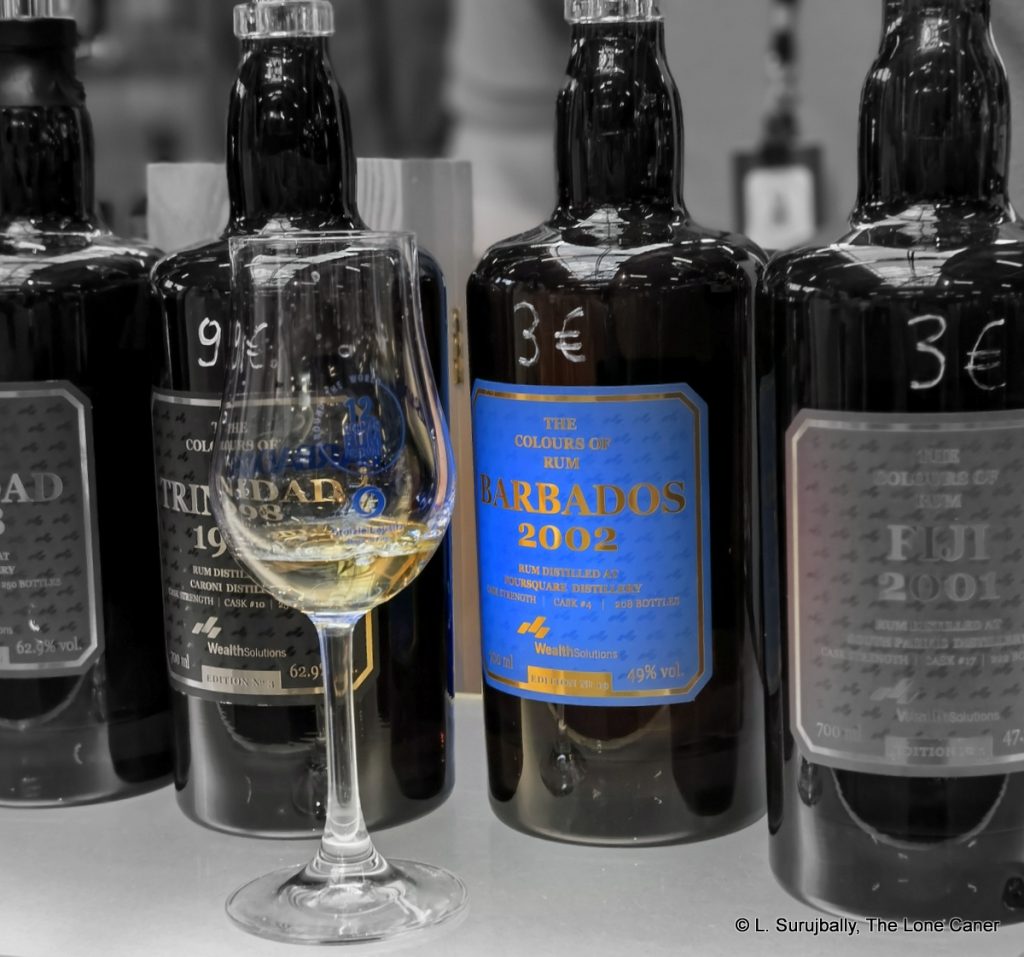
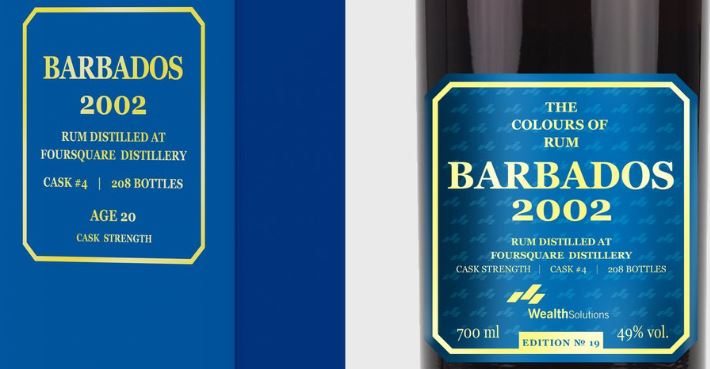
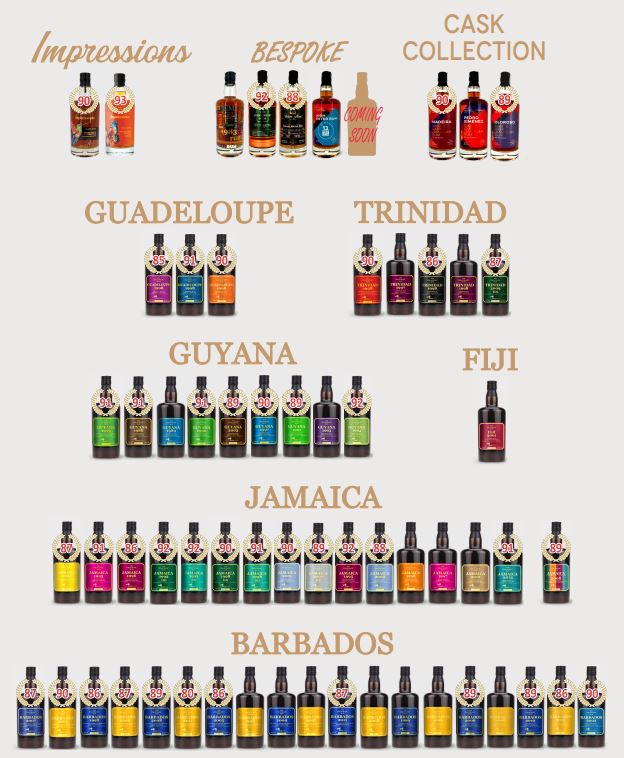
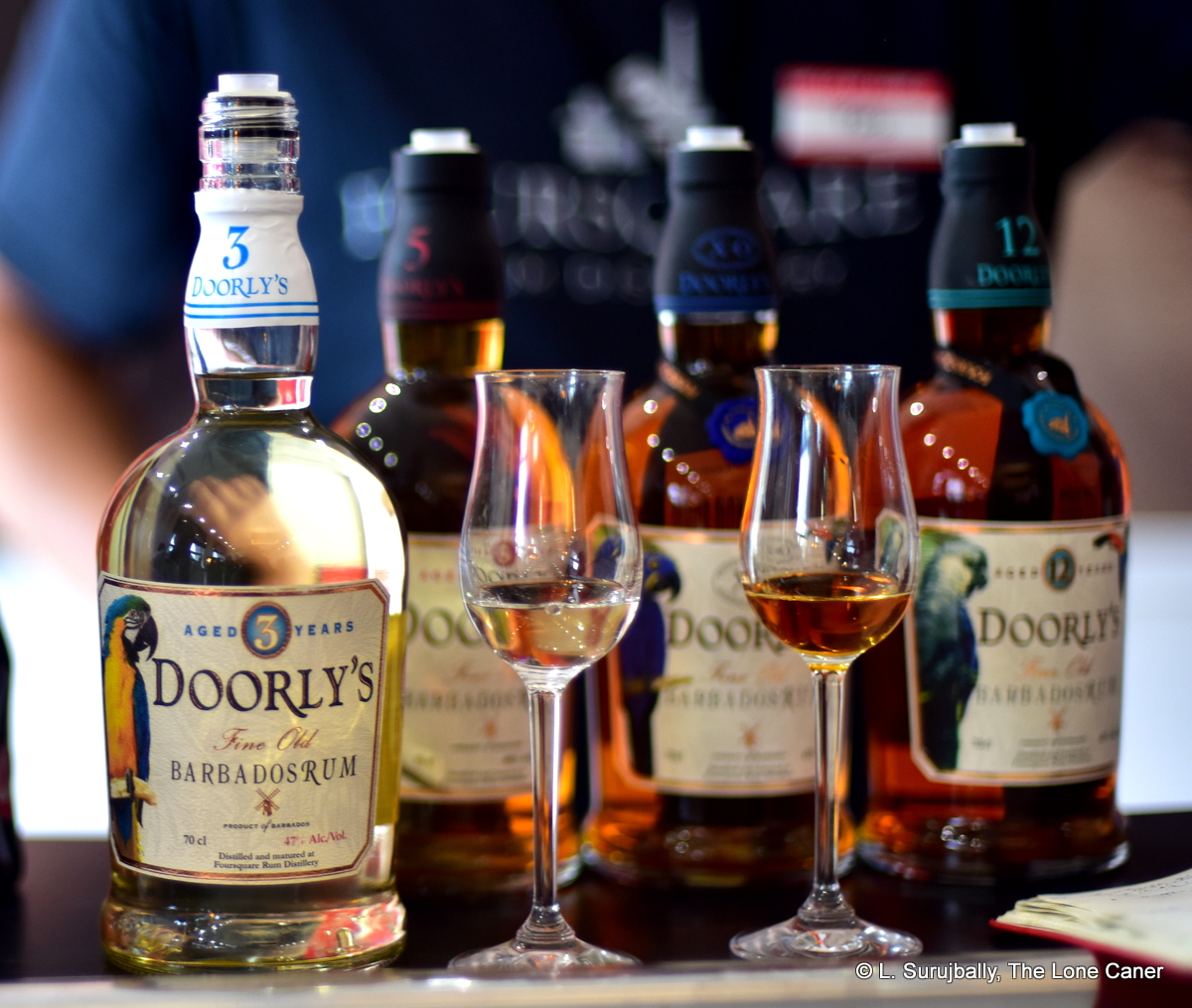
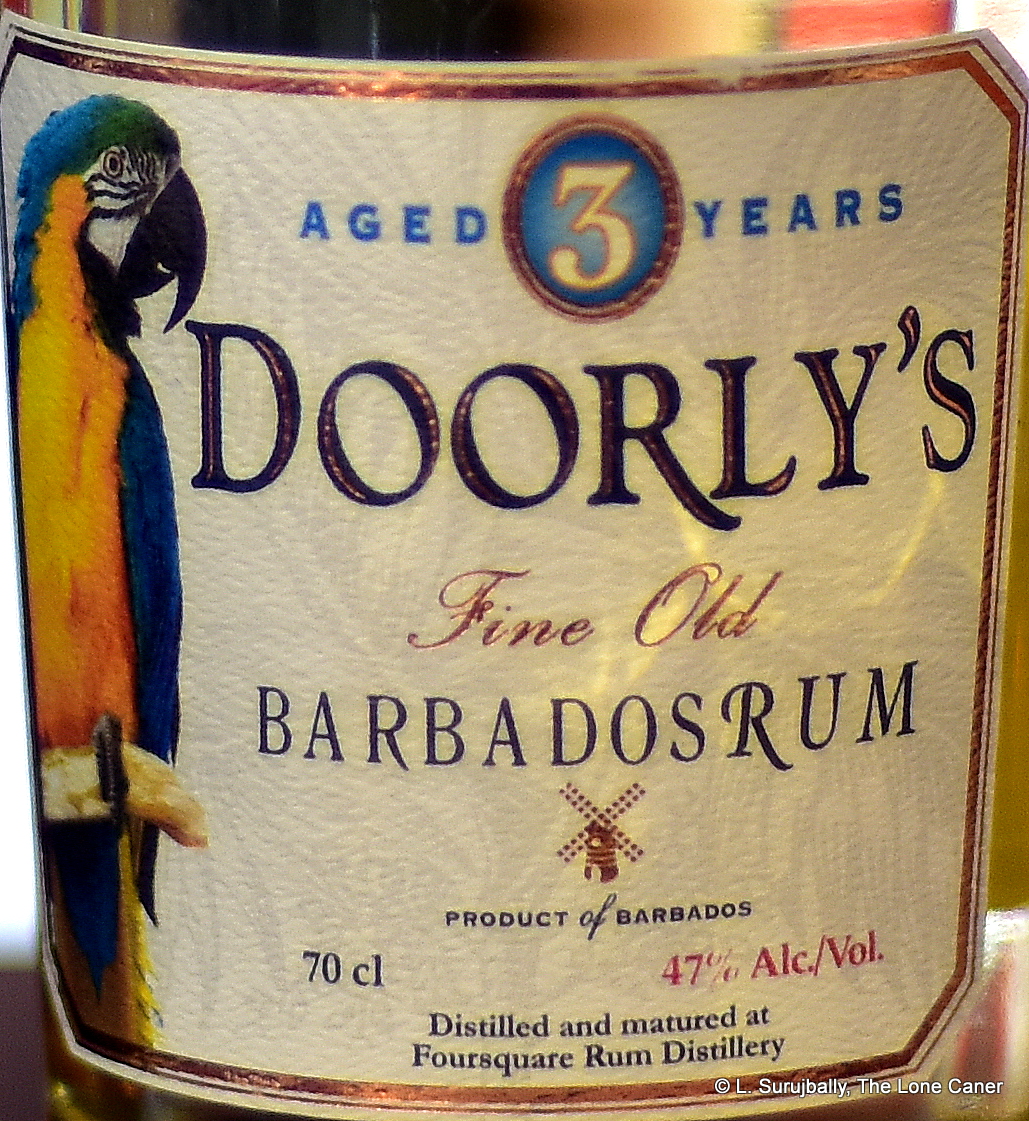
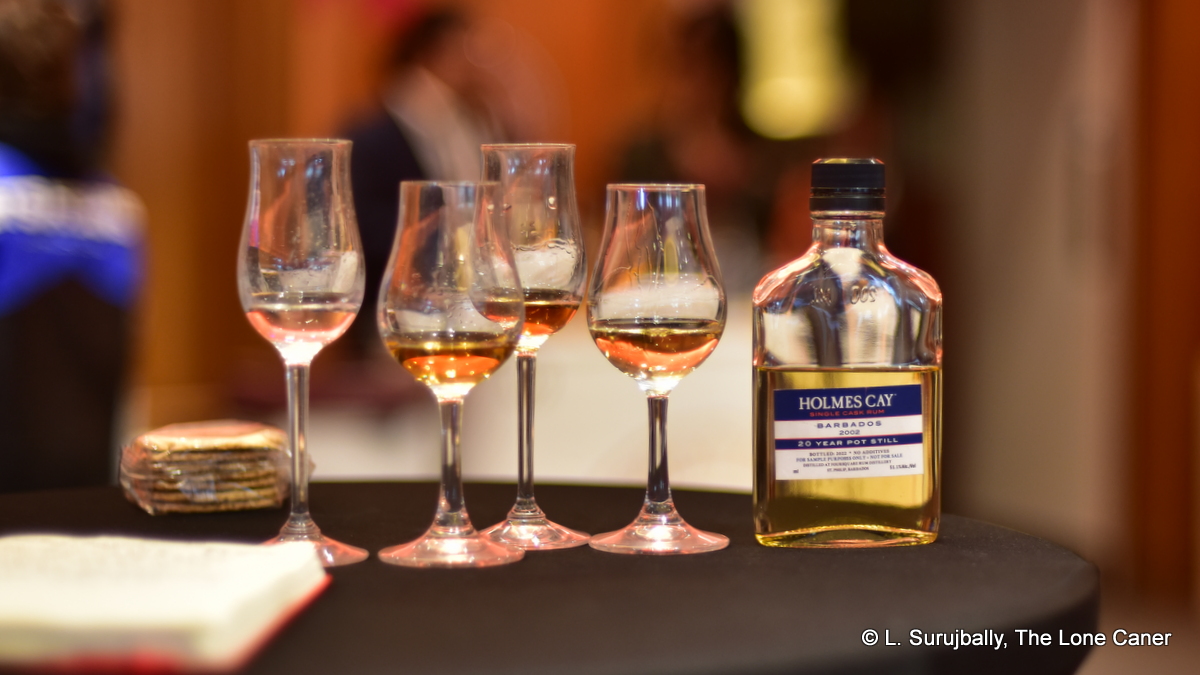
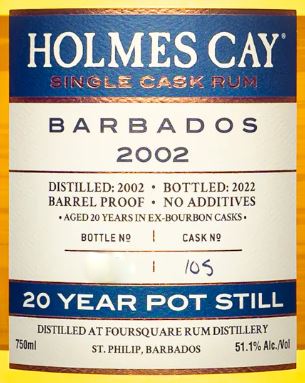
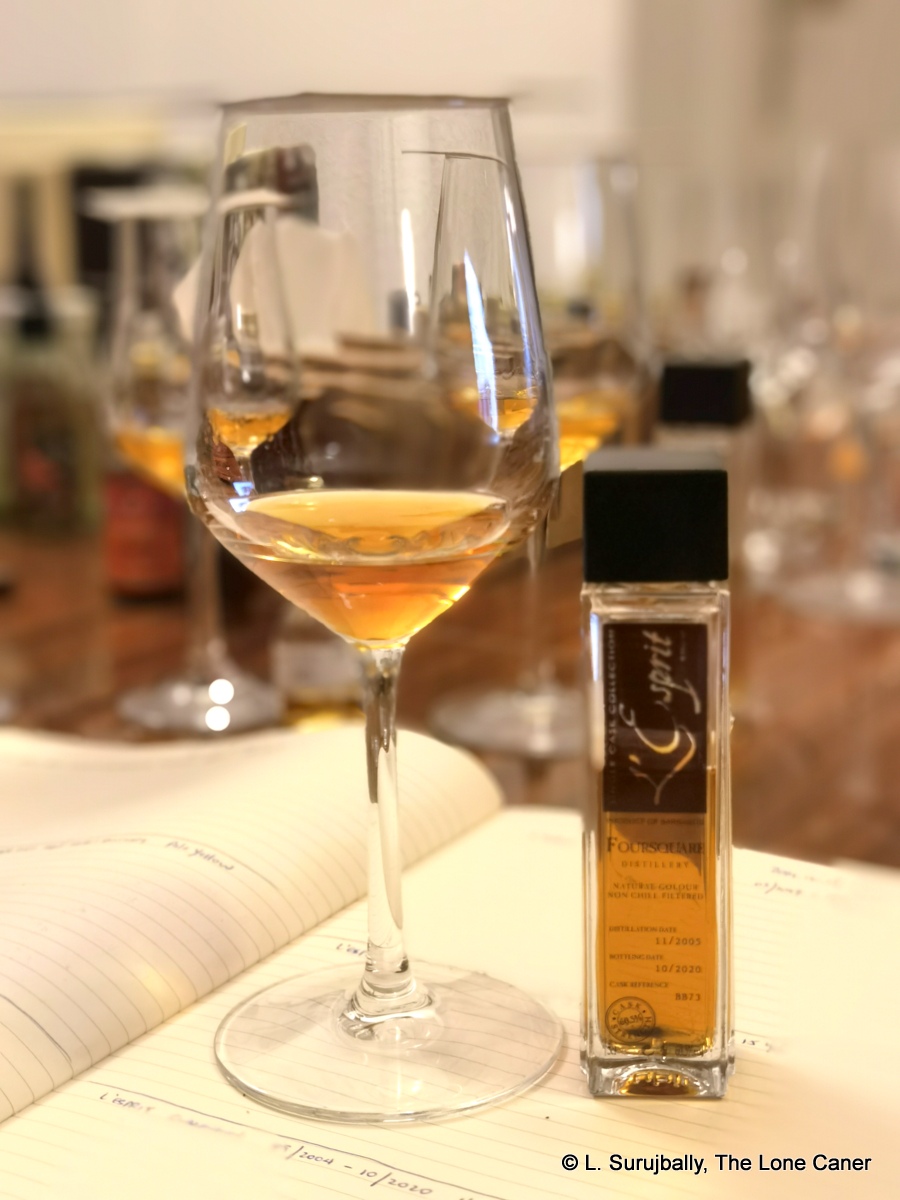
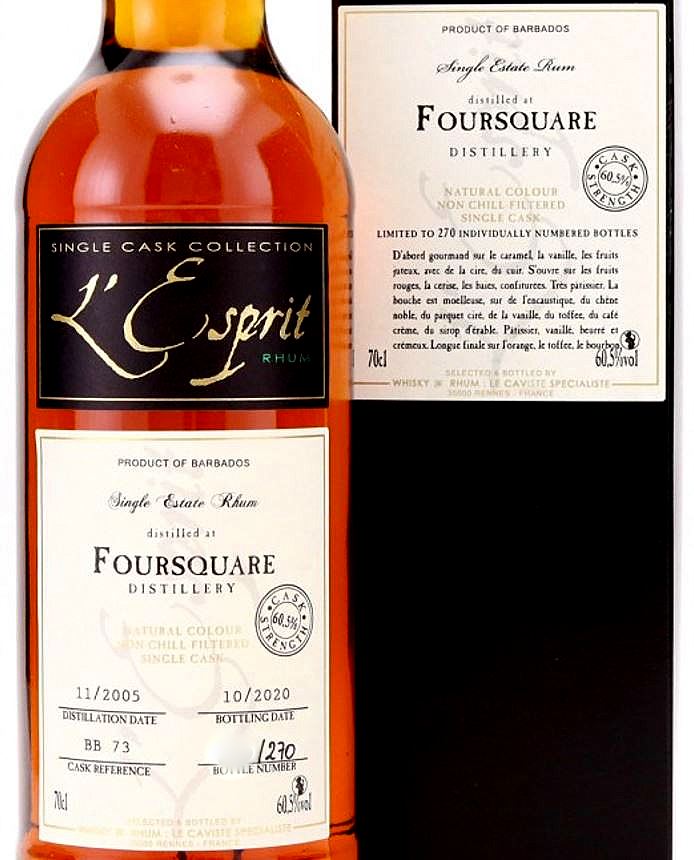
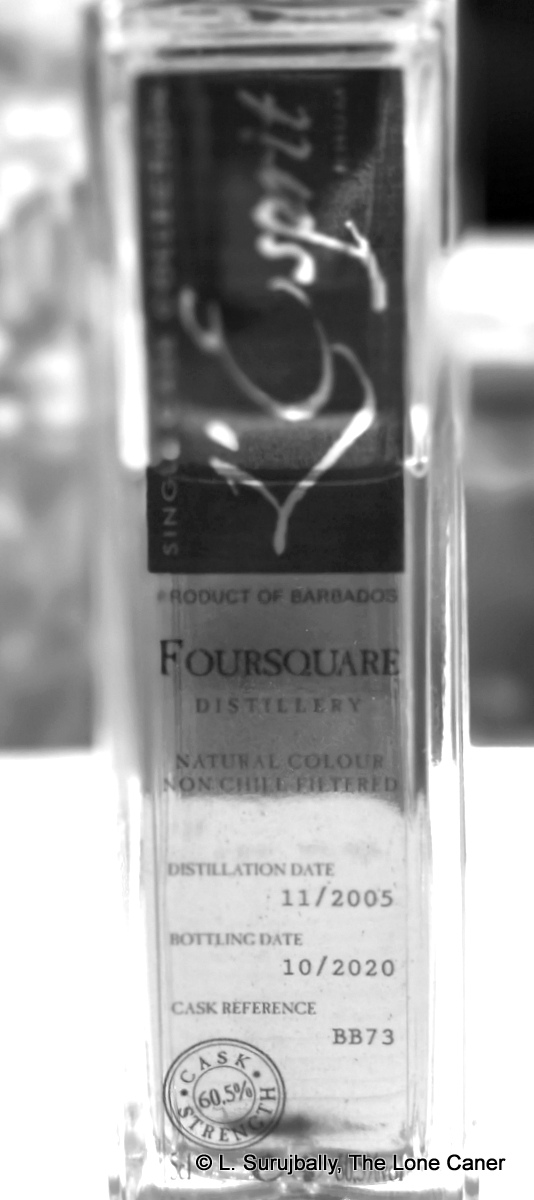
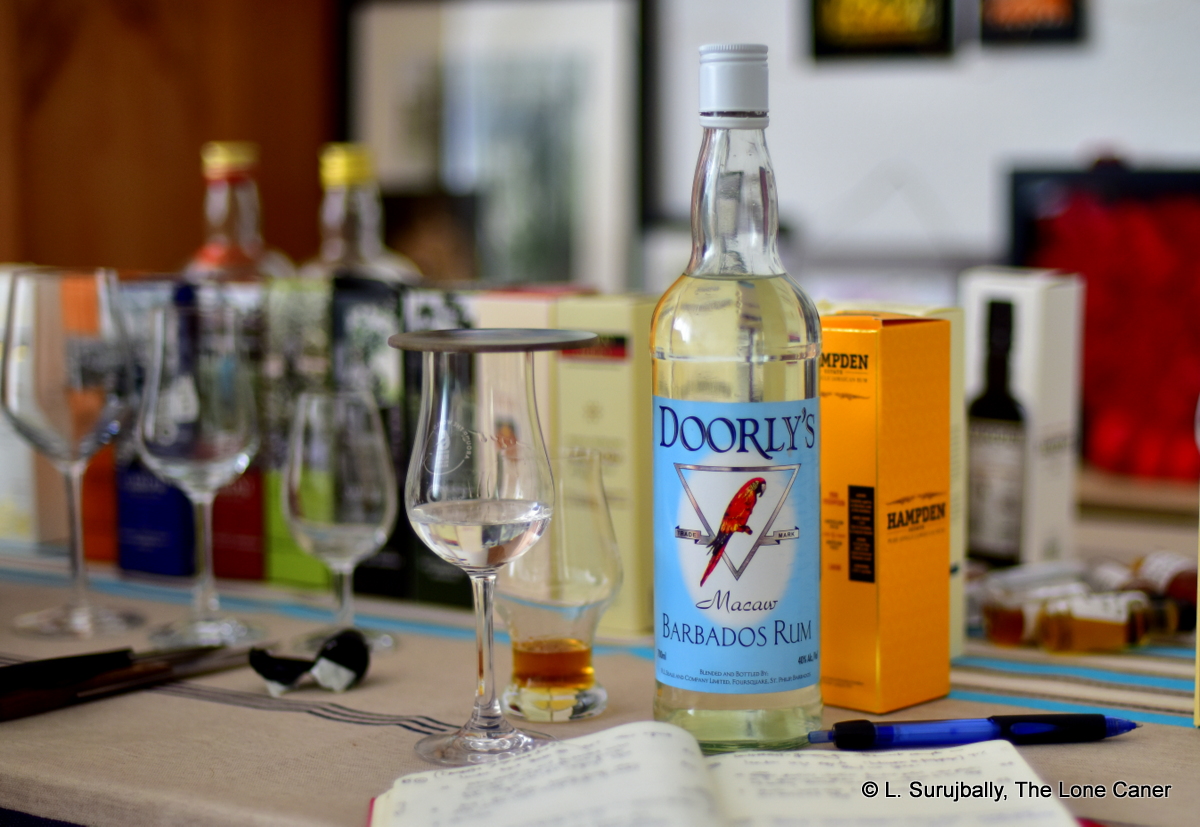
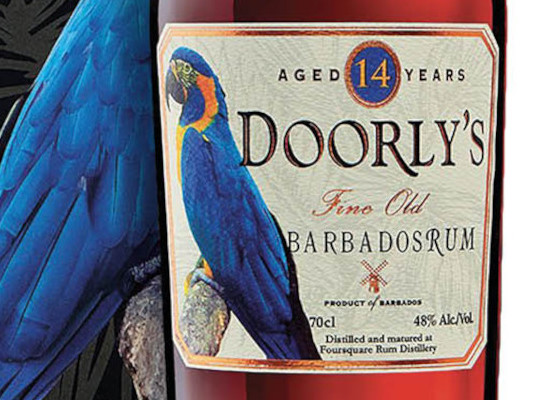
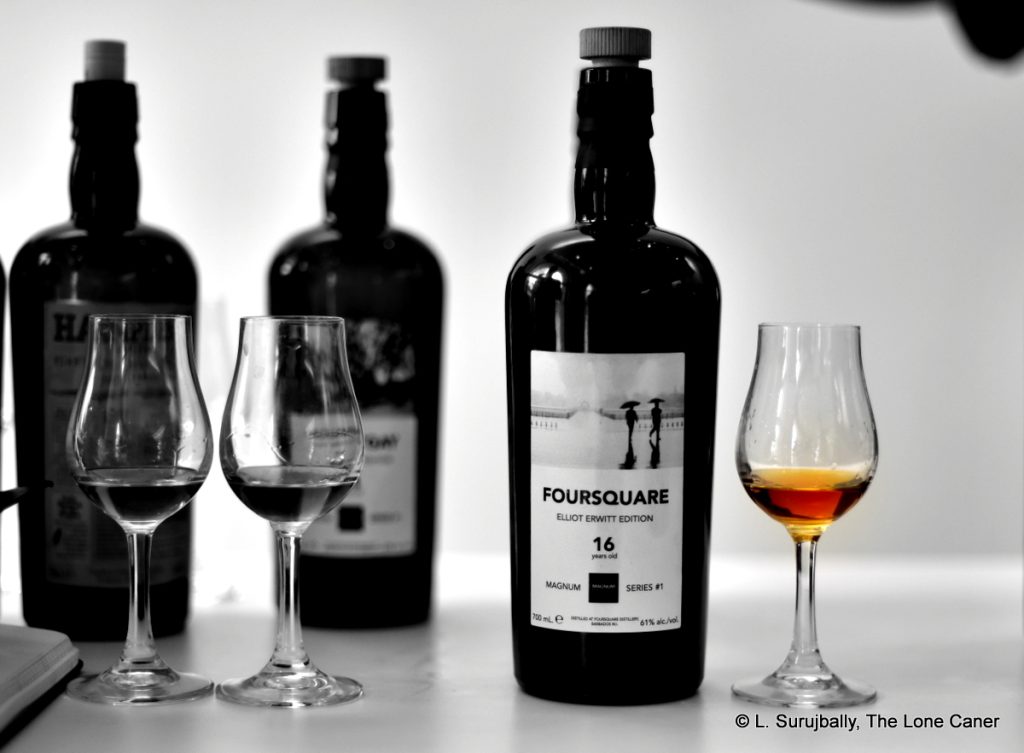
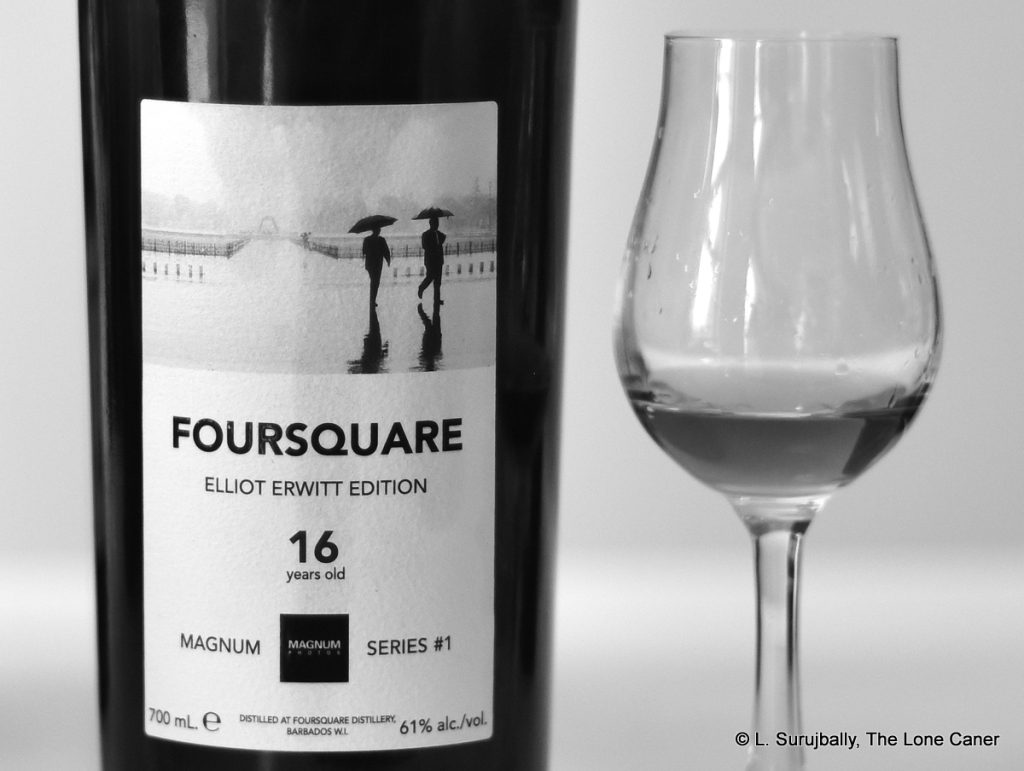
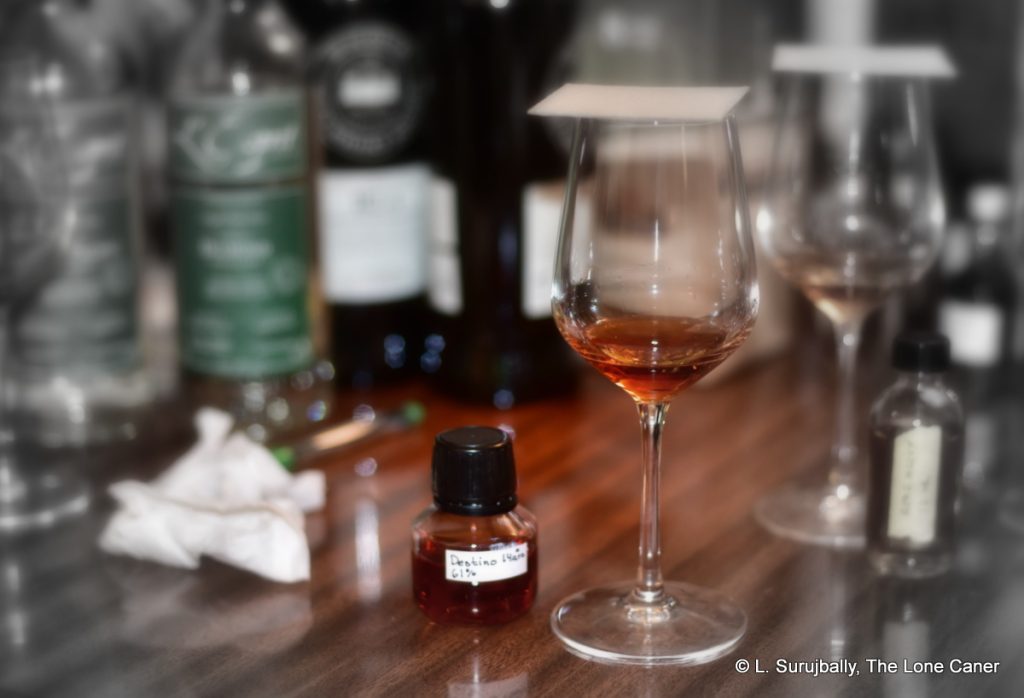
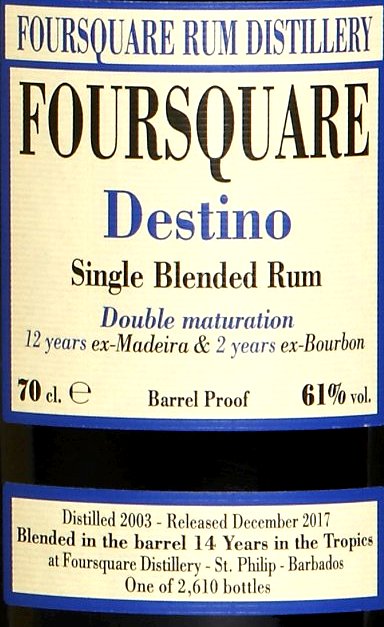
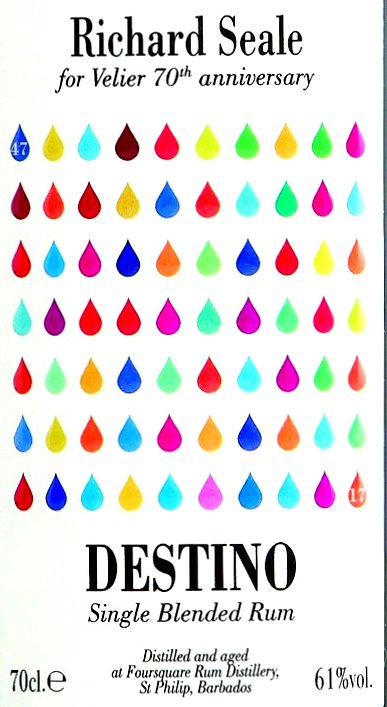
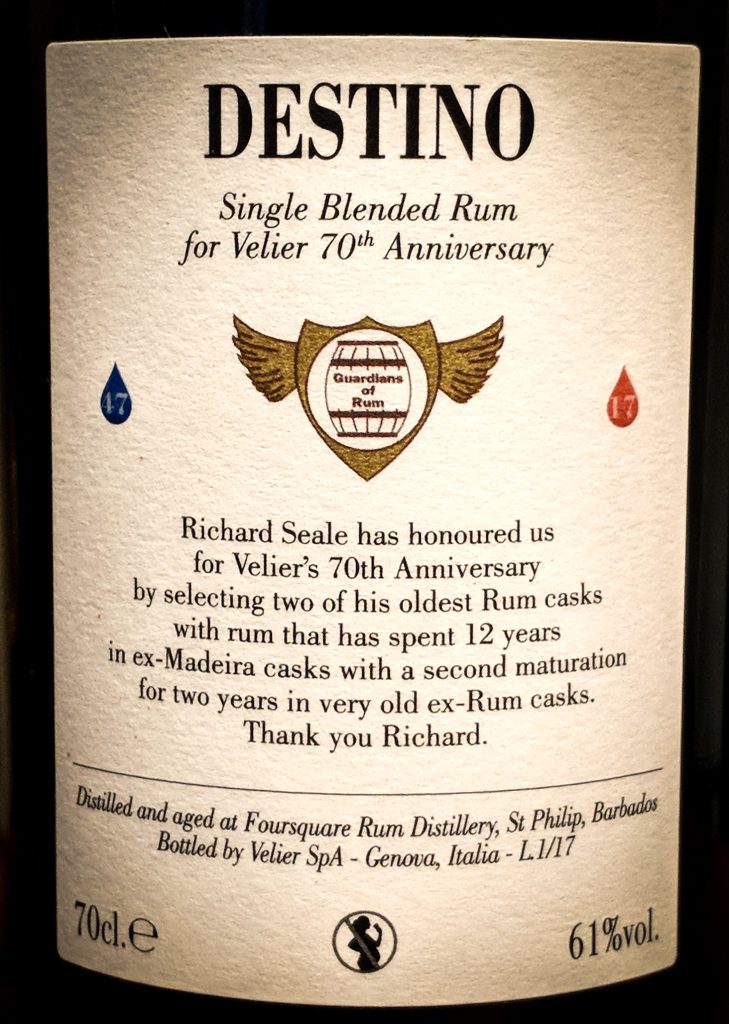
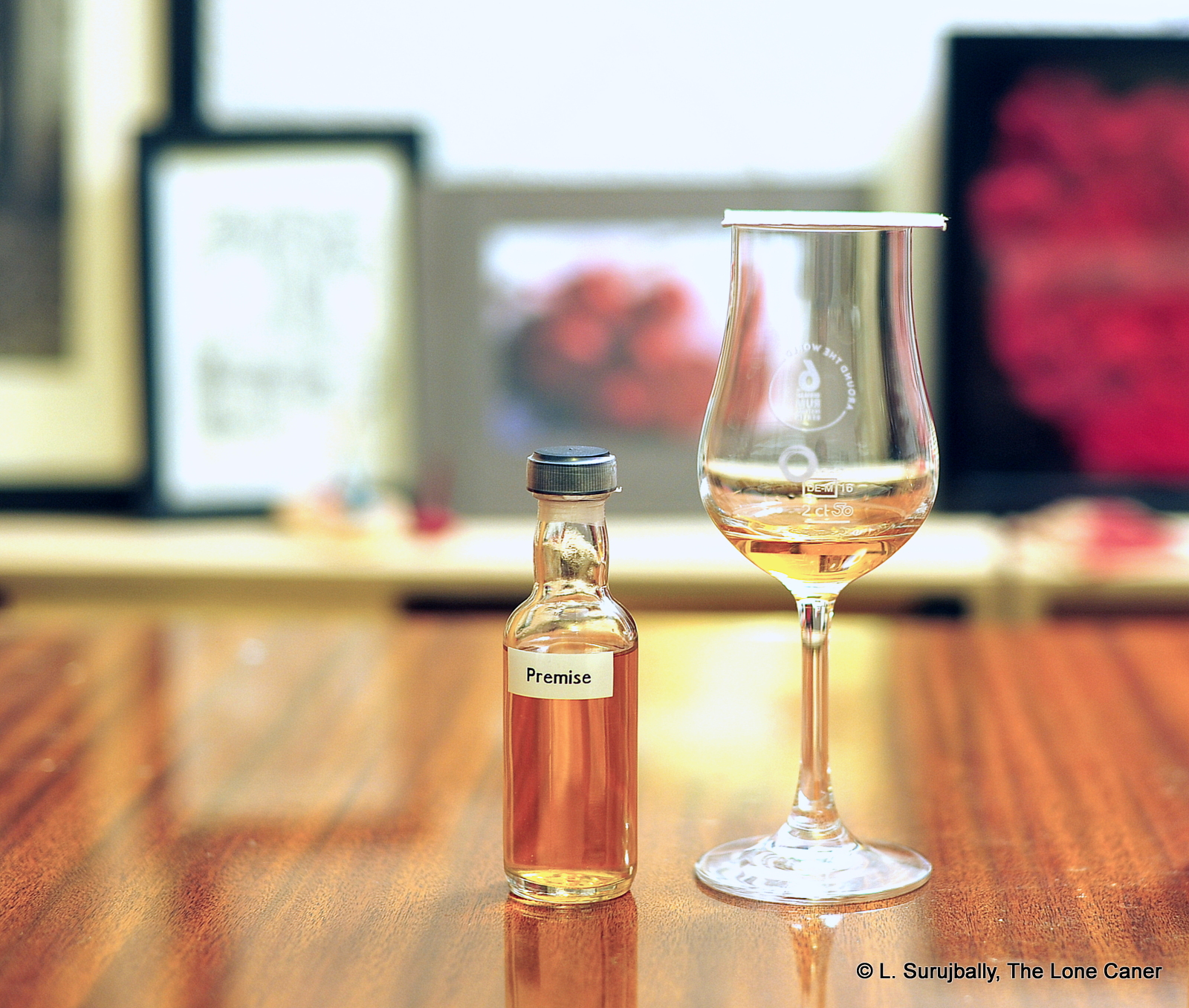
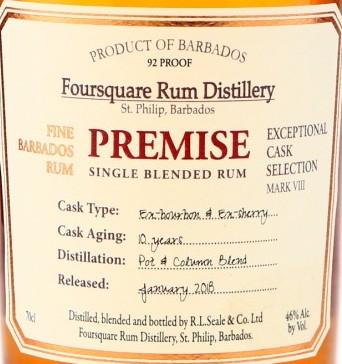
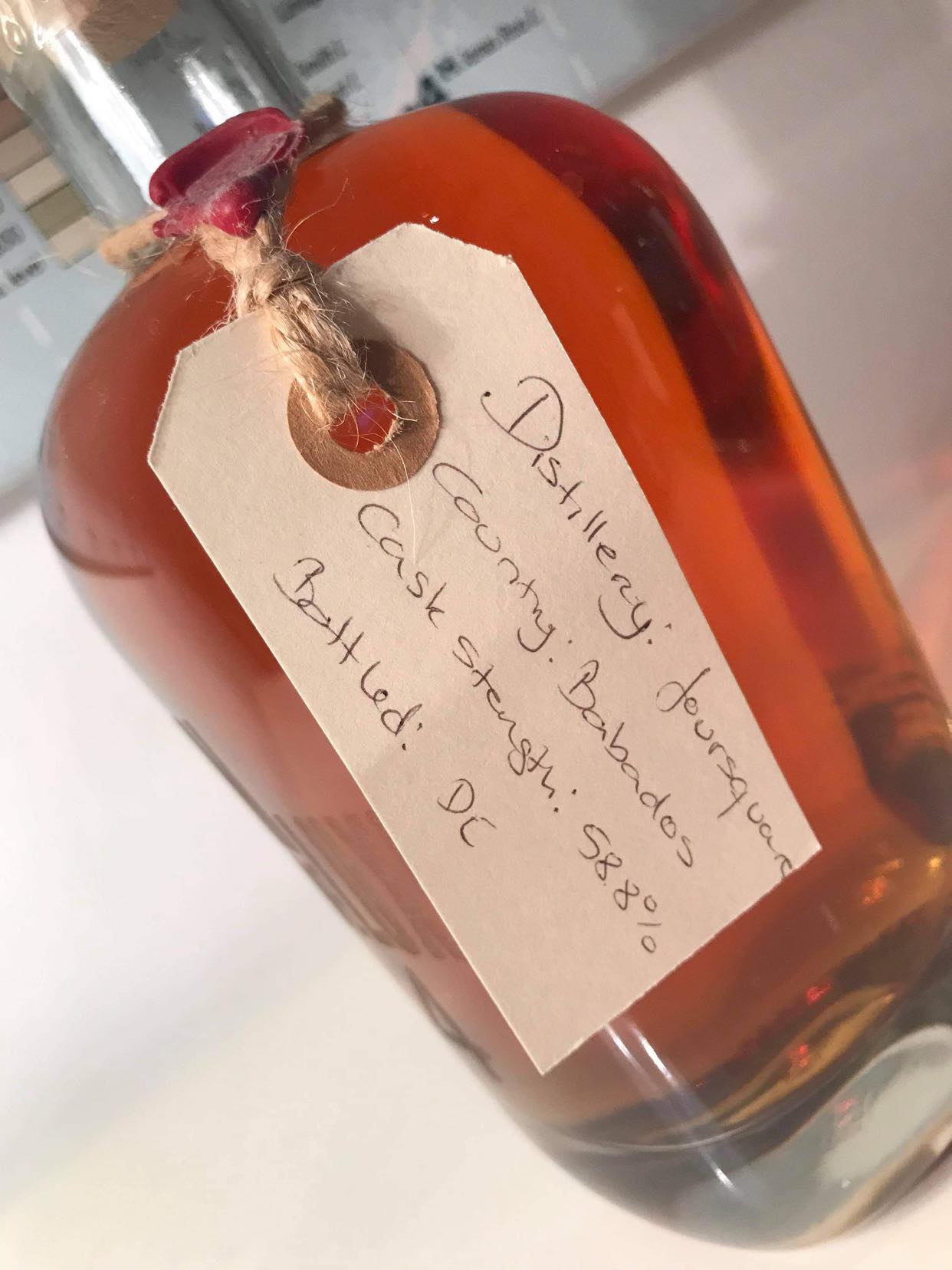
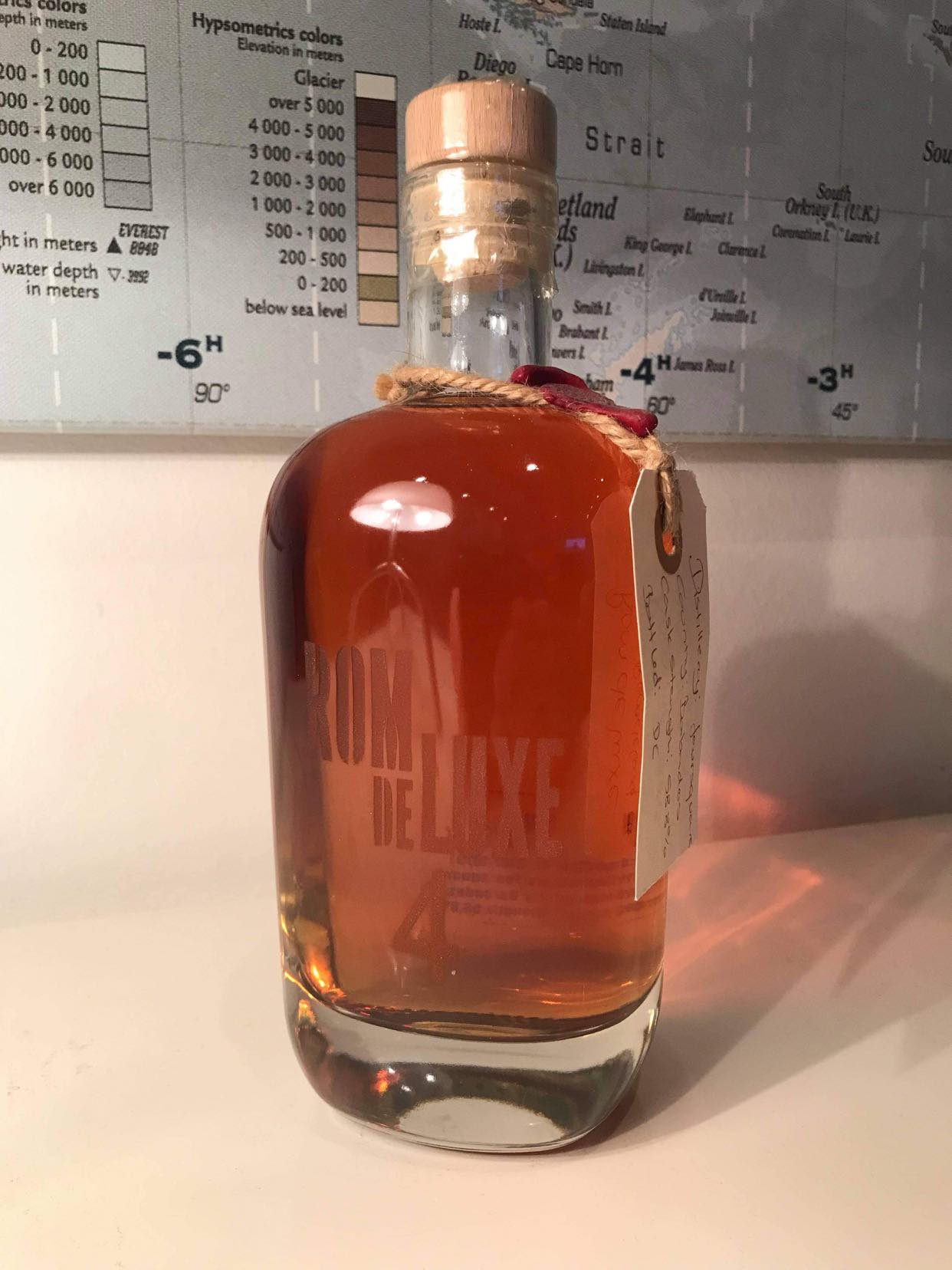
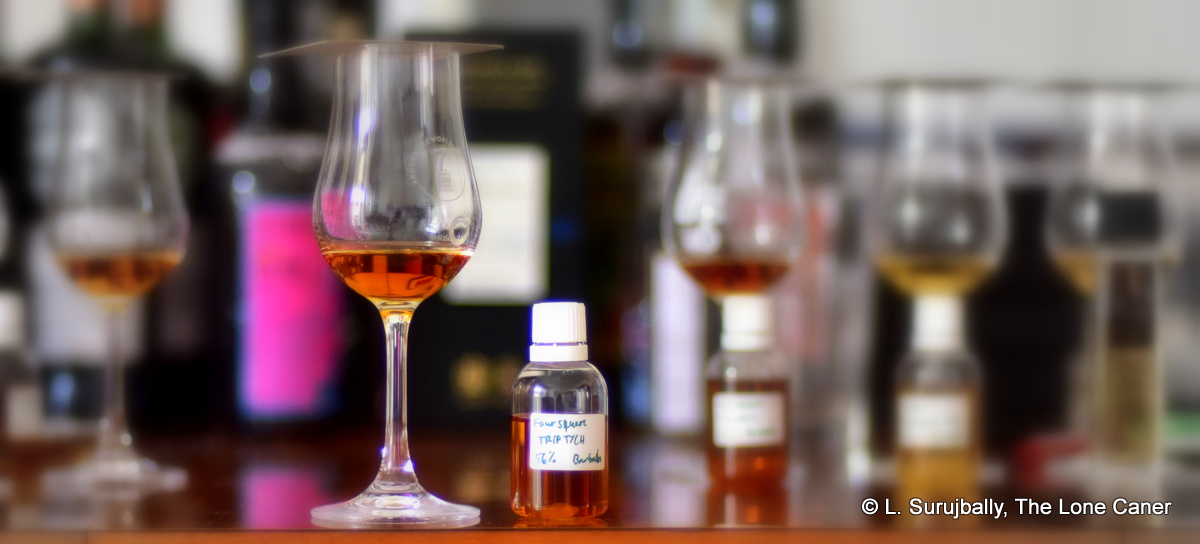
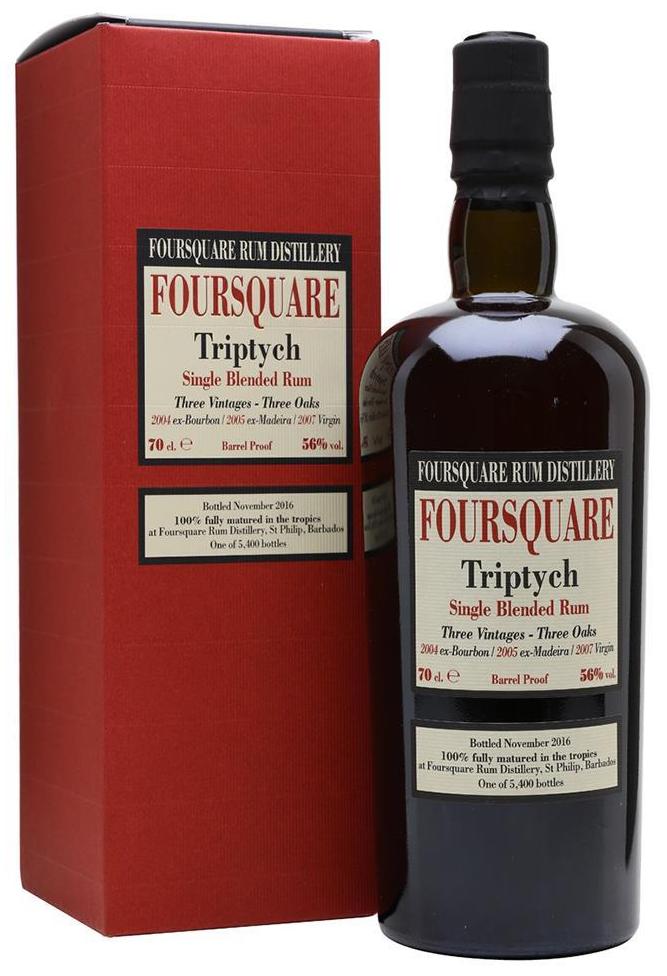
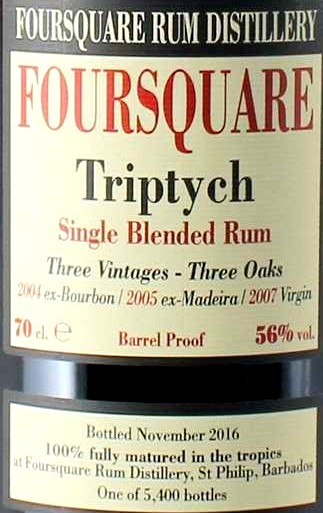
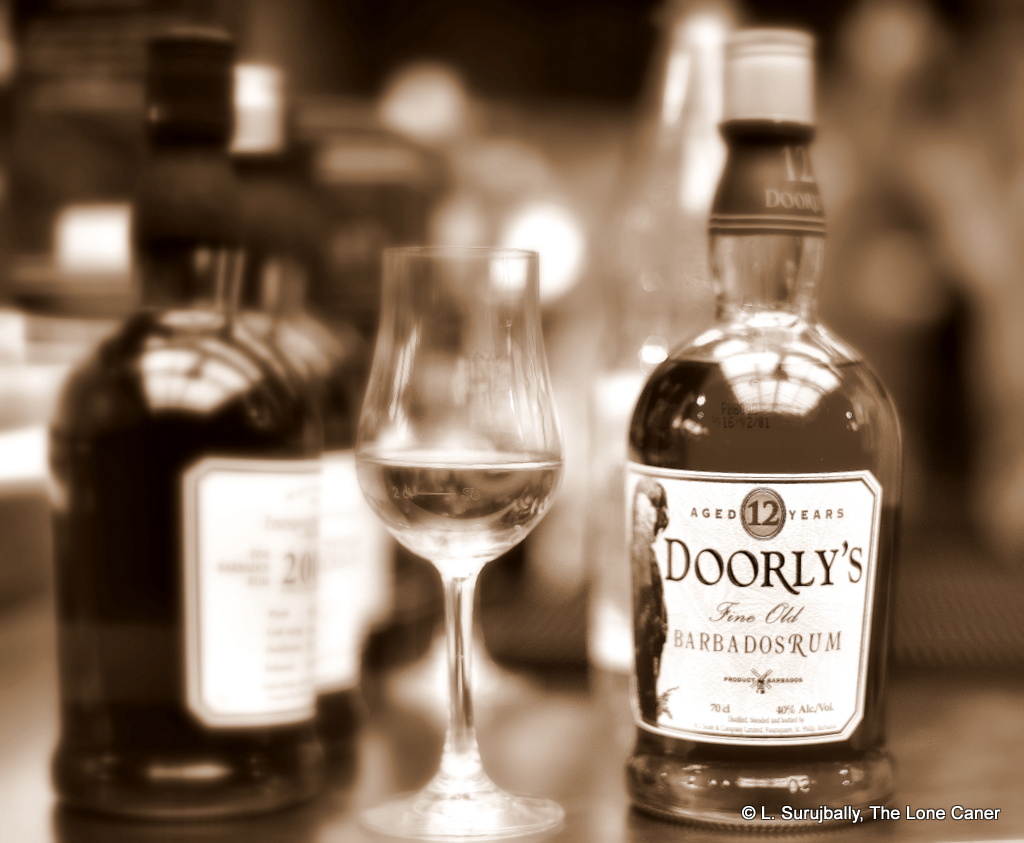
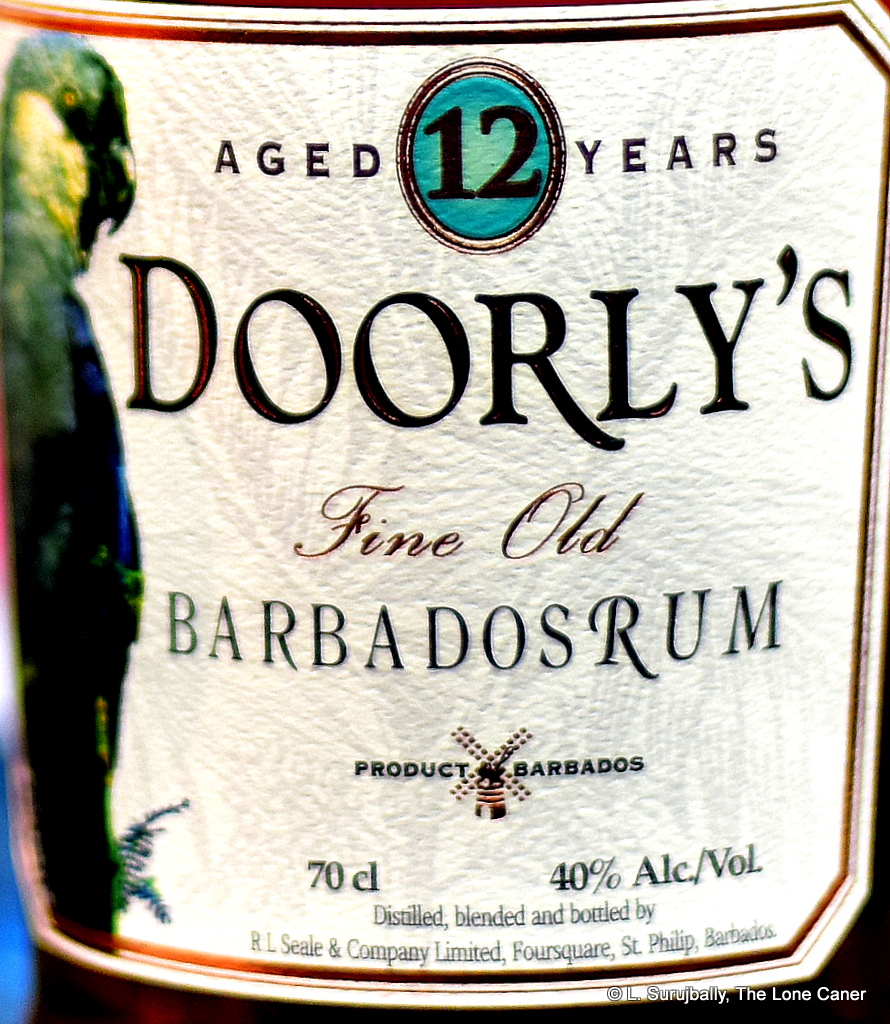
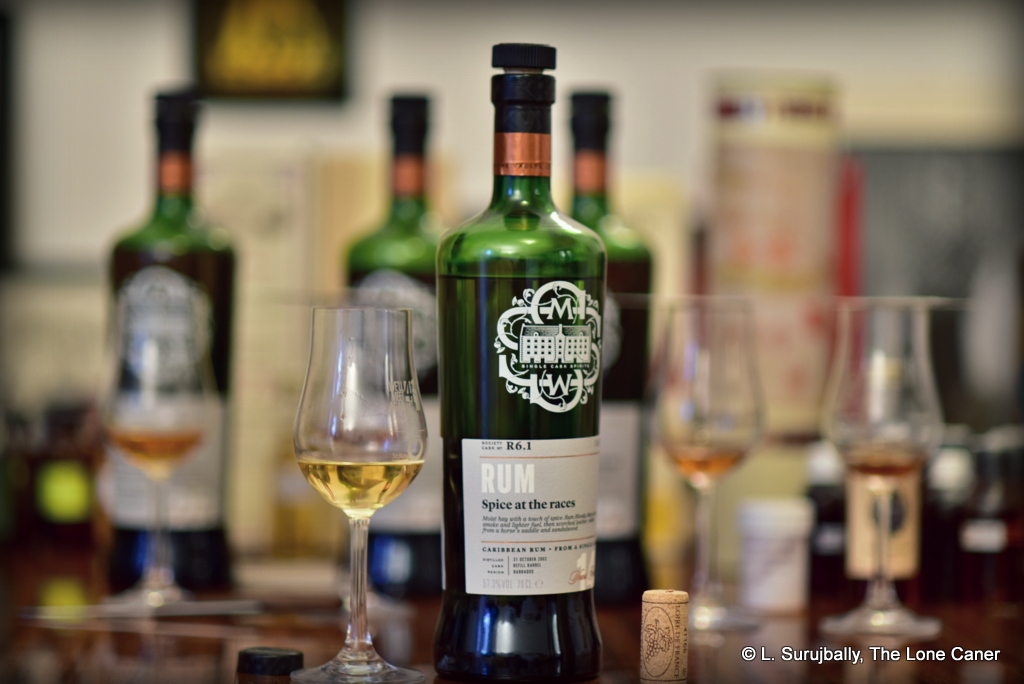
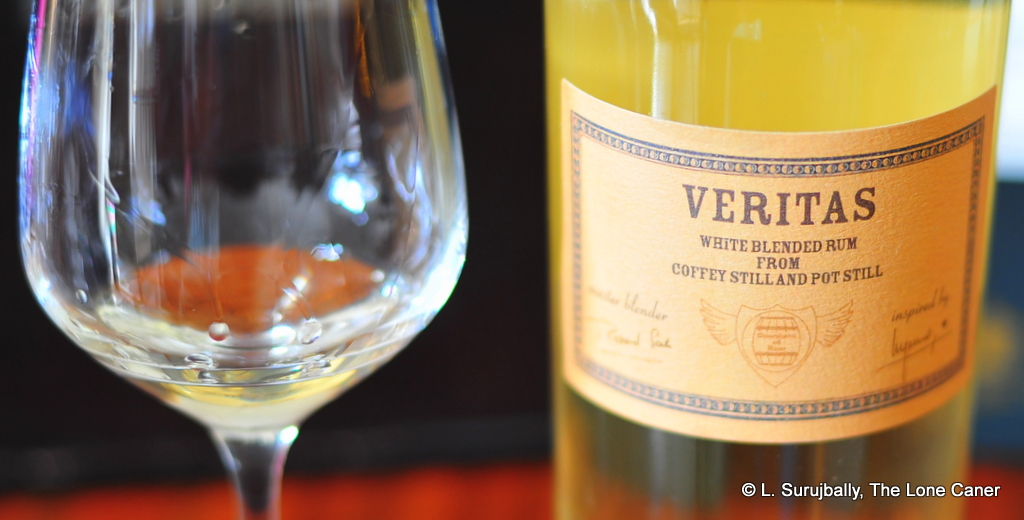
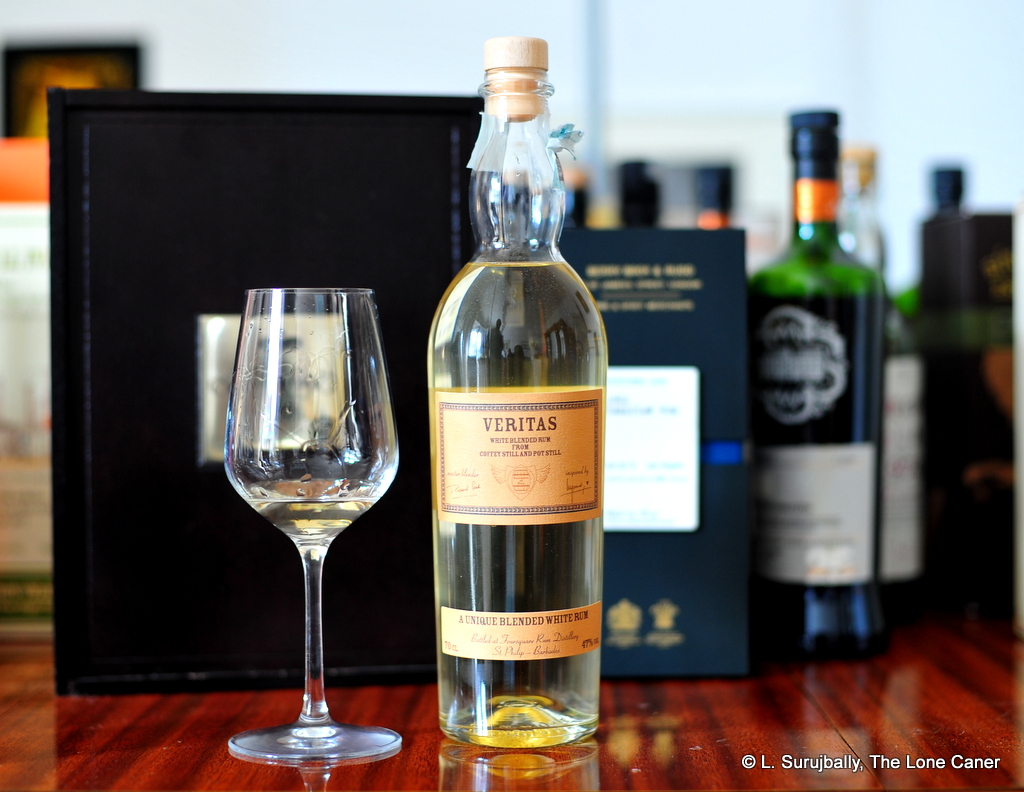
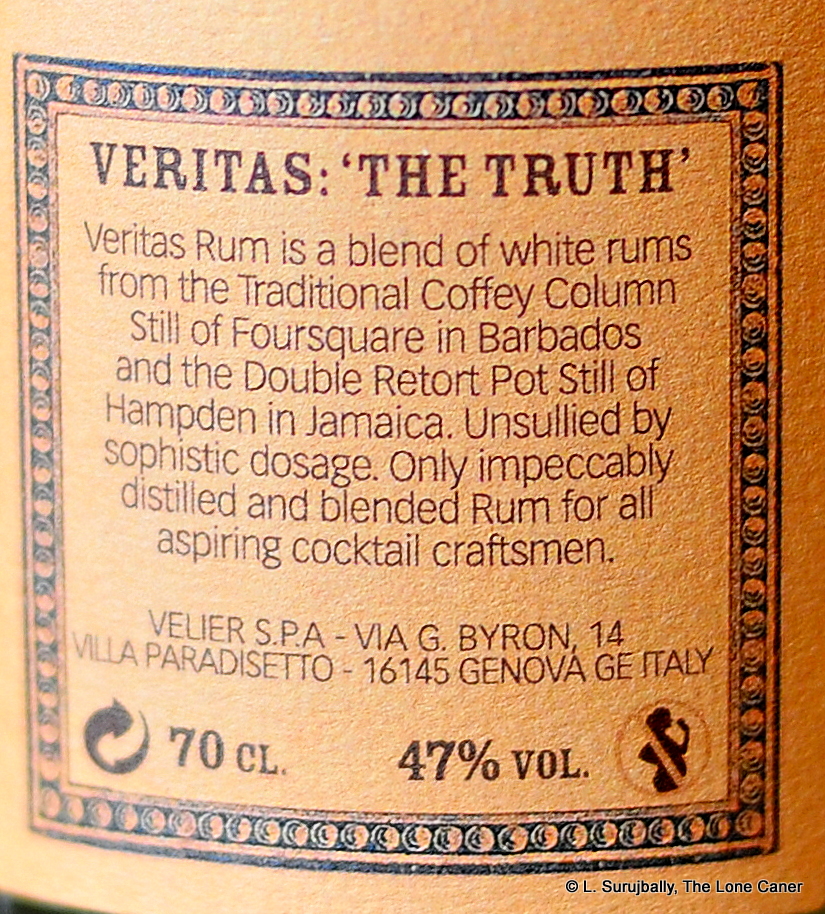 When it really comes down to it, the only thing I didn’t care for is the name. It’s not that I wanted to see “Jamados” or “Bamaica” on a label (one shudders at the mere idea) but I thought “Veritas” was just being a little too hamfisted with respect to taking a jab at Plantation in the ongoing feud with Maison Ferrand (the statement of “unsullied by sophistic dosage” pointed there). As it turned out, my opinion was not entirely justified, as Richard Seale noted in a comment to to me that… “It was intended to reflect the simple nature of the rum – free of (added) colour, sugar or anything else including at that time even addition from wood. The original idea was for it to be 100% unaged. In the end, when I swapped in aged pot for unaged, it was just markedly better and just ‘worked’ for me in the way the 100% unaged did not.” So for sure there was more than I thought at the back of this title.
When it really comes down to it, the only thing I didn’t care for is the name. It’s not that I wanted to see “Jamados” or “Bamaica” on a label (one shudders at the mere idea) but I thought “Veritas” was just being a little too hamfisted with respect to taking a jab at Plantation in the ongoing feud with Maison Ferrand (the statement of “unsullied by sophistic dosage” pointed there). As it turned out, my opinion was not entirely justified, as Richard Seale noted in a comment to to me that… “It was intended to reflect the simple nature of the rum – free of (added) colour, sugar or anything else including at that time even addition from wood. The original idea was for it to be 100% unaged. In the end, when I swapped in aged pot for unaged, it was just markedly better and just ‘worked’ for me in the way the 100% unaged did not.” So for sure there was more than I thought at the back of this title.
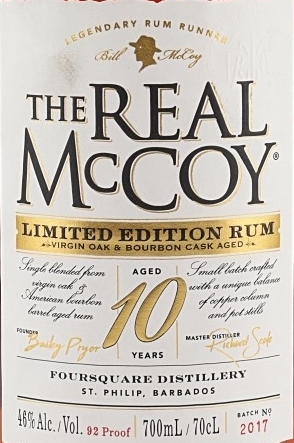 On the palate, the slightly higher strength worked, up to a point. It’s a lot better than 40%, and allowed a certain heft and firmness to brush across the tongue. This then enhanced a melded mishmash of fruits – watermelon, bananas, papaya – plus cocoa butter, coconut shavings in a Bounty chocolate bar, honey and a pinch of salt and vanilla, all of which got shouldered aside by the tannic woodiness. I suspect the virgin oak is responsible for that surfeit, and it made the rum sharper and crisper than those McCoy and Foursquare rums we’re used to, not entirely to the rum’s advantage. The finish summed of most of this – it was dry, rather rough, sharp, and pretty much gave caramel, vanilla, light fruits, and some last tannins which were by now starting to fade. (Subsequent sips and a re-checks over the next few days don’t appreciably change these notes).
On the palate, the slightly higher strength worked, up to a point. It’s a lot better than 40%, and allowed a certain heft and firmness to brush across the tongue. This then enhanced a melded mishmash of fruits – watermelon, bananas, papaya – plus cocoa butter, coconut shavings in a Bounty chocolate bar, honey and a pinch of salt and vanilla, all of which got shouldered aside by the tannic woodiness. I suspect the virgin oak is responsible for that surfeit, and it made the rum sharper and crisper than those McCoy and Foursquare rums we’re used to, not entirely to the rum’s advantage. The finish summed of most of this – it was dry, rather rough, sharp, and pretty much gave caramel, vanilla, light fruits, and some last tannins which were by now starting to fade. (Subsequent sips and a re-checks over the next few days don’t appreciably change these notes).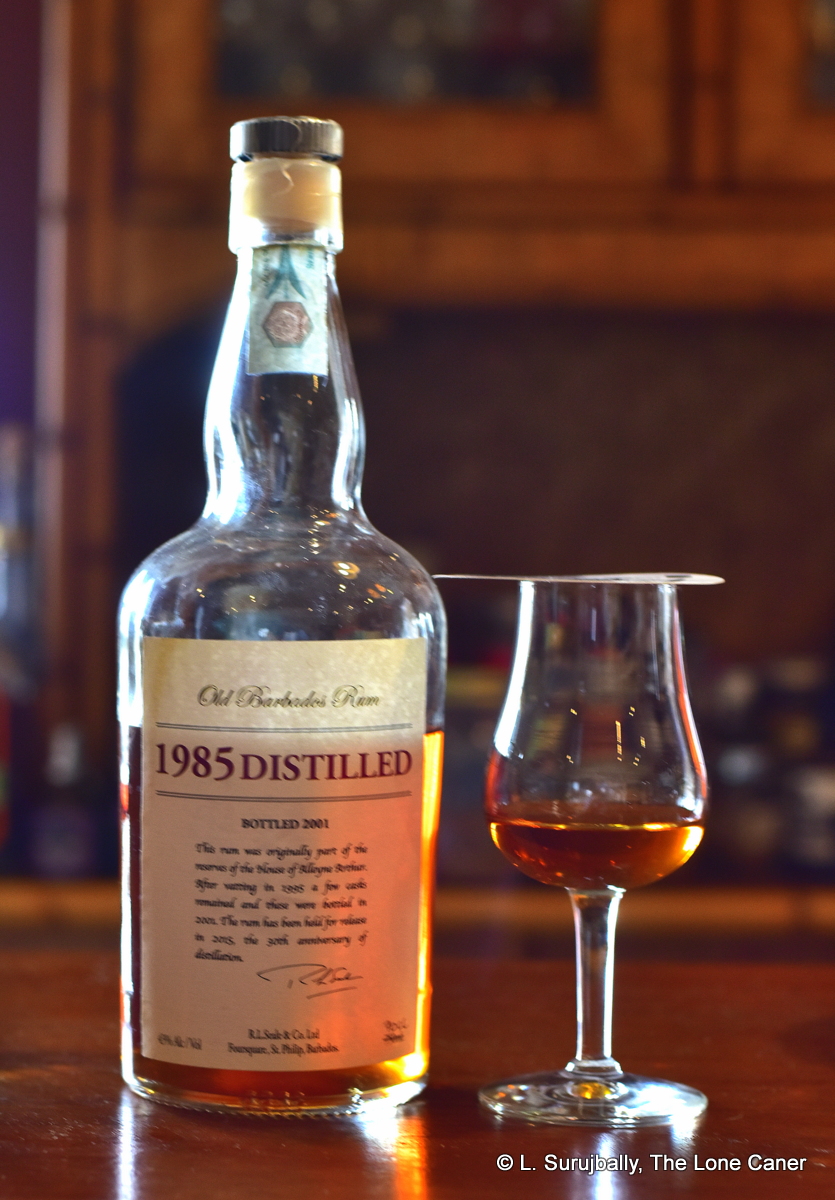 This is a rum that has become a grail for many: it just does not seem to be easily available, the price keeps going up (it’s listed around €300 in some online shops and I’ve seen it auctioned for twice that amount), and of course (drum roll, please) it’s released by Richard Seale. Put this all together and you can see why it is pursued with such slack-jawed drooling relentlessness by all those who worship at the shrine of Foursquare and know all the releases by their date of birth and first names.
This is a rum that has become a grail for many: it just does not seem to be easily available, the price keeps going up (it’s listed around €300 in some online shops and I’ve seen it auctioned for twice that amount), and of course (drum roll, please) it’s released by Richard Seale. Put this all together and you can see why it is pursued with such slack-jawed drooling relentlessness by all those who worship at the shrine of Foursquare and know all the releases by their date of birth and first names.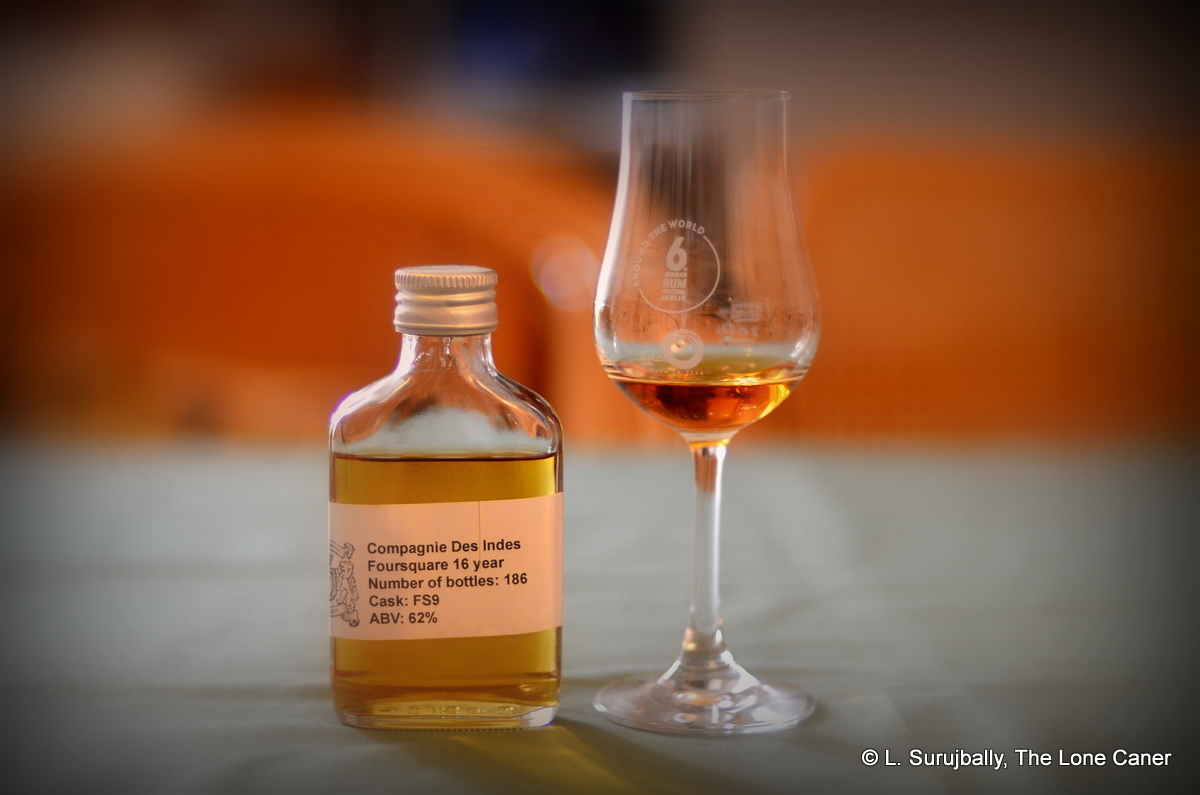
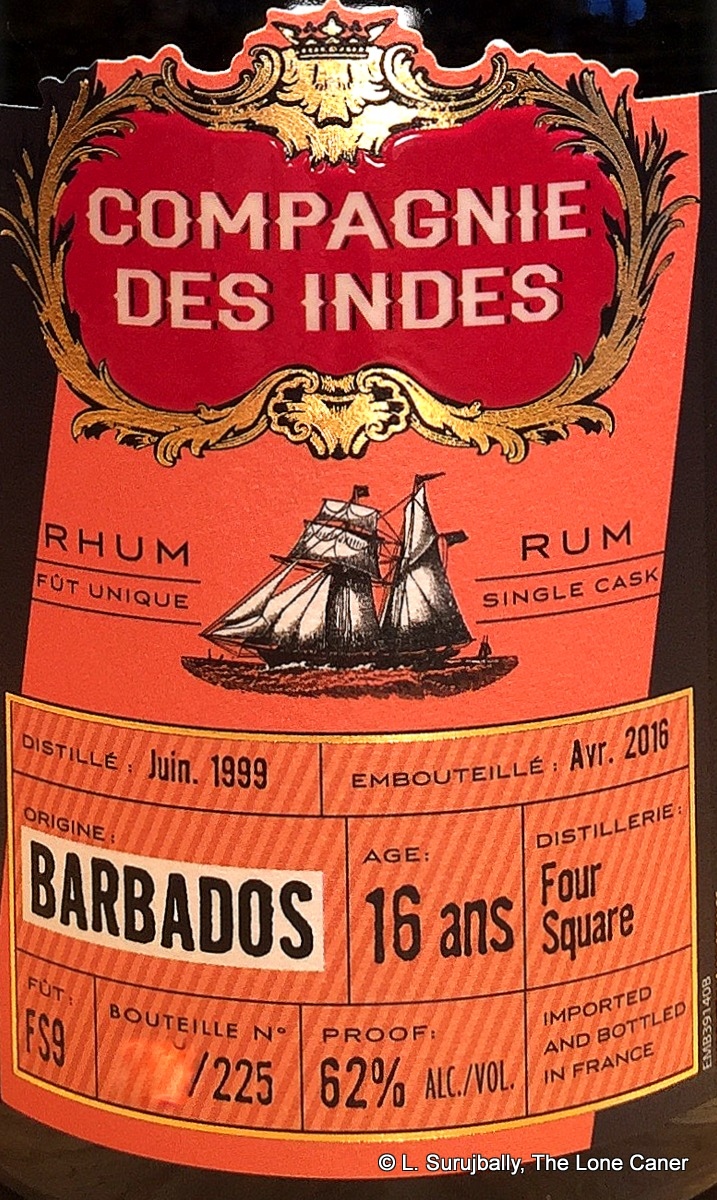 I don’t have any other observations to make, so let’s jump right in without further ado. Nose first – in a word, luscious. Although there are some salty hints to begin with, the overwhelming initial smells are of ripe black grapes, prunes, honey, and plums, with some flambeed bananas and brown sugar coming up right behind. The heat and bite of a 62% strength is very well controlled, and it presents as firm and strong without any bitchiness. After leaving it to open a few minutes, there are some fainter aromas of red/black olives, not too salty, as well as the bitter astringency of very strong black tea, and oak, mellowed by the softness of a musky caramel and vanilla, plus a sprinkling of herbs and maybe cinnamon. So quite a bit going on in there, and well worth taking one’s time with and not rushing to taste.
I don’t have any other observations to make, so let’s jump right in without further ado. Nose first – in a word, luscious. Although there are some salty hints to begin with, the overwhelming initial smells are of ripe black grapes, prunes, honey, and plums, with some flambeed bananas and brown sugar coming up right behind. The heat and bite of a 62% strength is very well controlled, and it presents as firm and strong without any bitchiness. After leaving it to open a few minutes, there are some fainter aromas of red/black olives, not too salty, as well as the bitter astringency of very strong black tea, and oak, mellowed by the softness of a musky caramel and vanilla, plus a sprinkling of herbs and maybe cinnamon. So quite a bit going on in there, and well worth taking one’s time with and not rushing to taste.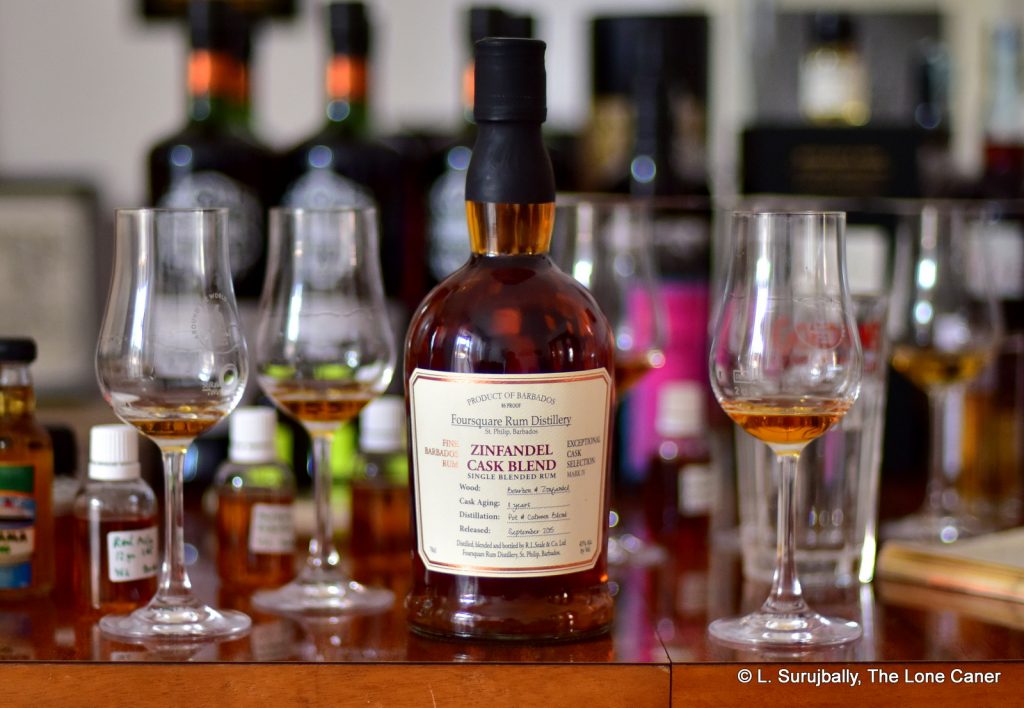
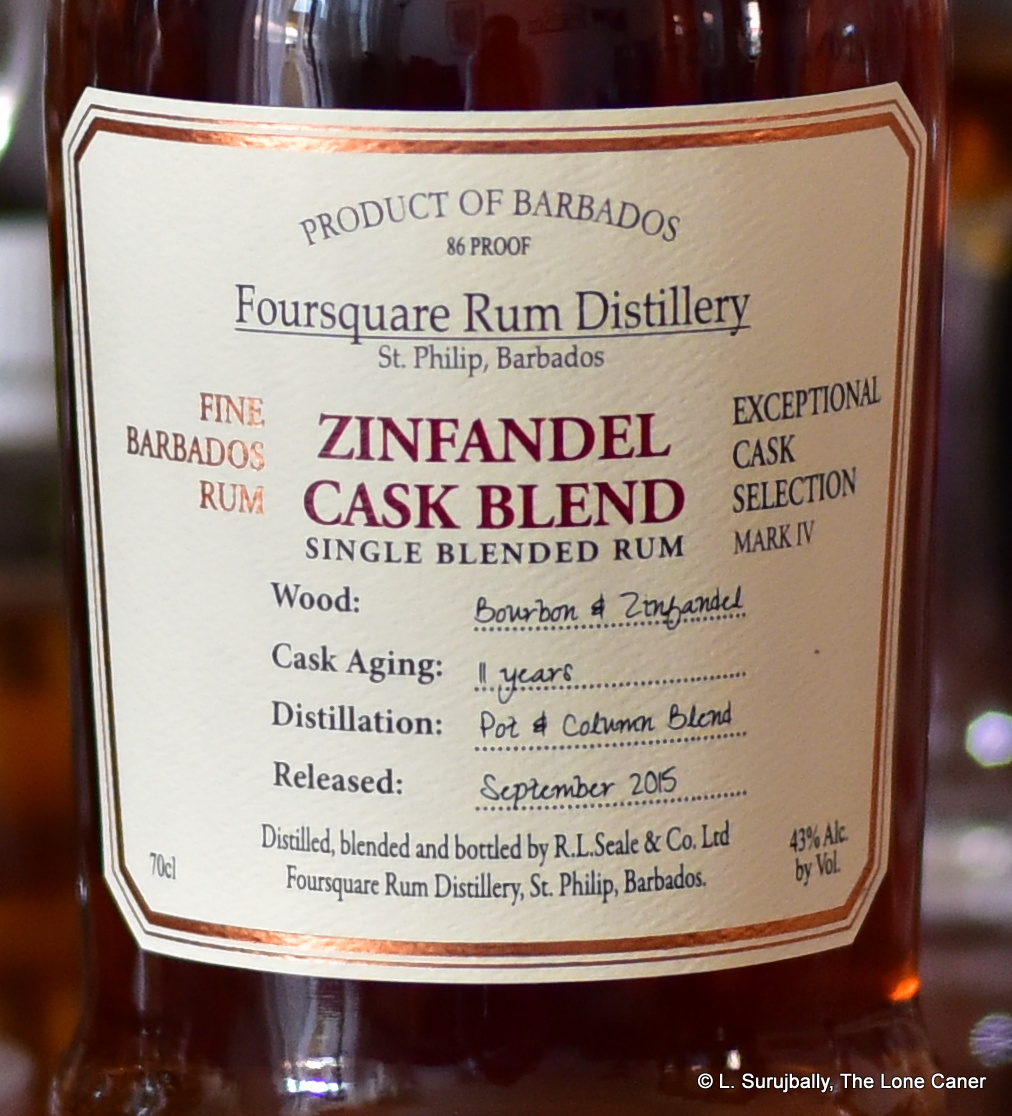 Tasting revealed somewhat less clothing in the suitcase, though it was quite a decent rum to sip (mixing it is totally unnecessary) – it was a little sharp before settling down into a relative smooth experience, and tasted primarily of white and watery fruits (pears, watermelon, white gavas), cereals, coconut shavings, sweet wine, and had a sly hint of tart red fruiness that was almost, but not quite sour, behind it all – red currants, cranberries, grapes. It was quite light and easy and escaped being an alcohol-flavoured water in fine style – not bad for something at close to standard strength, and the touch of sweet fruitiness imparted by the Zin barrels was in no way overdone. Even the finish was quite pleasant, being warm, relatively soft, and closing off the show with some tart fruitiness, coconut shavings, vanilla, milk chocolate, salted caramel, french bread (!!) and touch of thyme.
Tasting revealed somewhat less clothing in the suitcase, though it was quite a decent rum to sip (mixing it is totally unnecessary) – it was a little sharp before settling down into a relative smooth experience, and tasted primarily of white and watery fruits (pears, watermelon, white gavas), cereals, coconut shavings, sweet wine, and had a sly hint of tart red fruiness that was almost, but not quite sour, behind it all – red currants, cranberries, grapes. It was quite light and easy and escaped being an alcohol-flavoured water in fine style – not bad for something at close to standard strength, and the touch of sweet fruitiness imparted by the Zin barrels was in no way overdone. Even the finish was quite pleasant, being warm, relatively soft, and closing off the show with some tart fruitiness, coconut shavings, vanilla, milk chocolate, salted caramel, french bread (!!) and touch of thyme.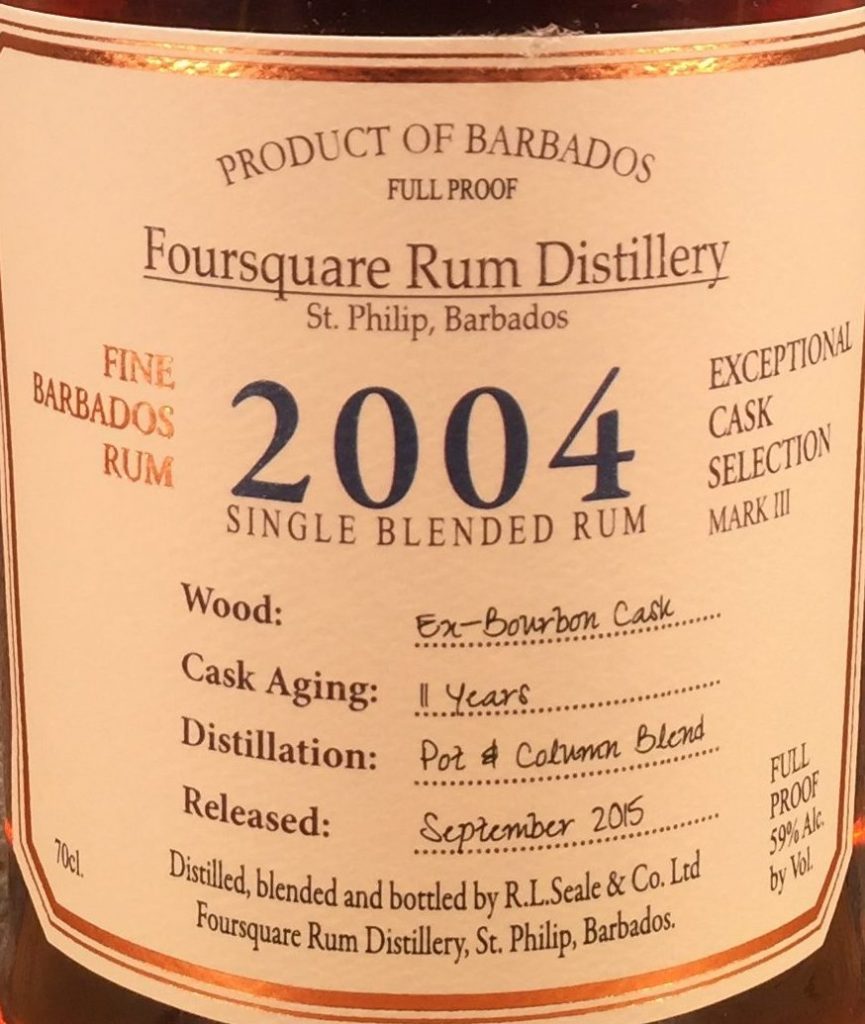
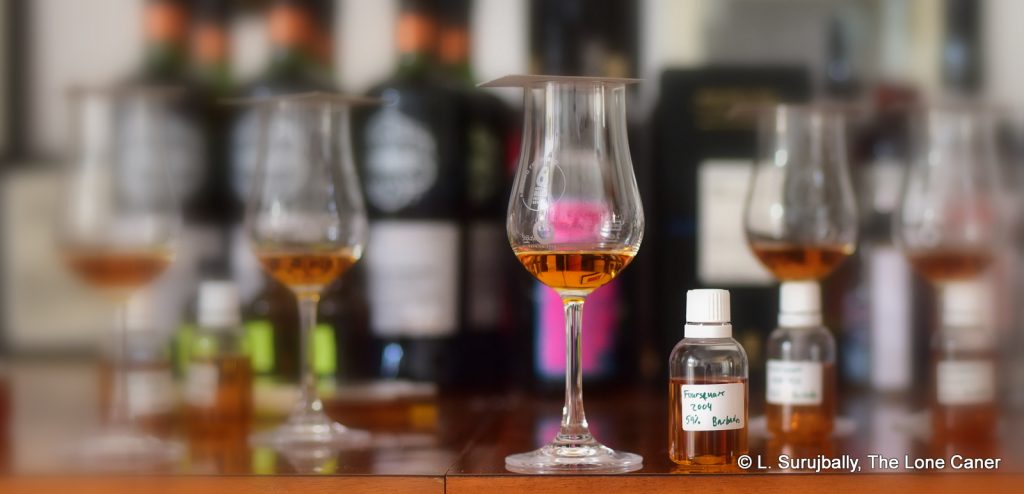
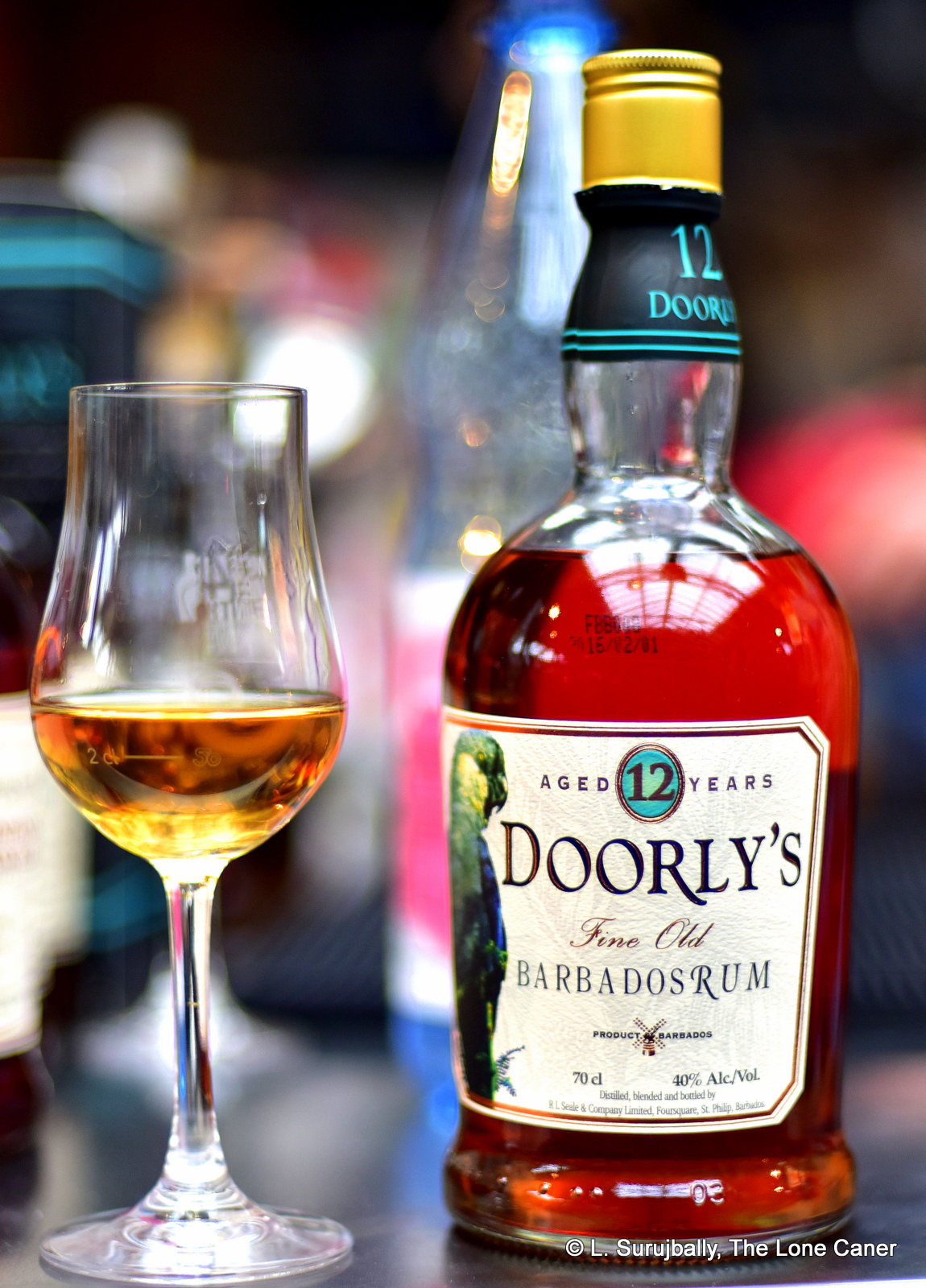
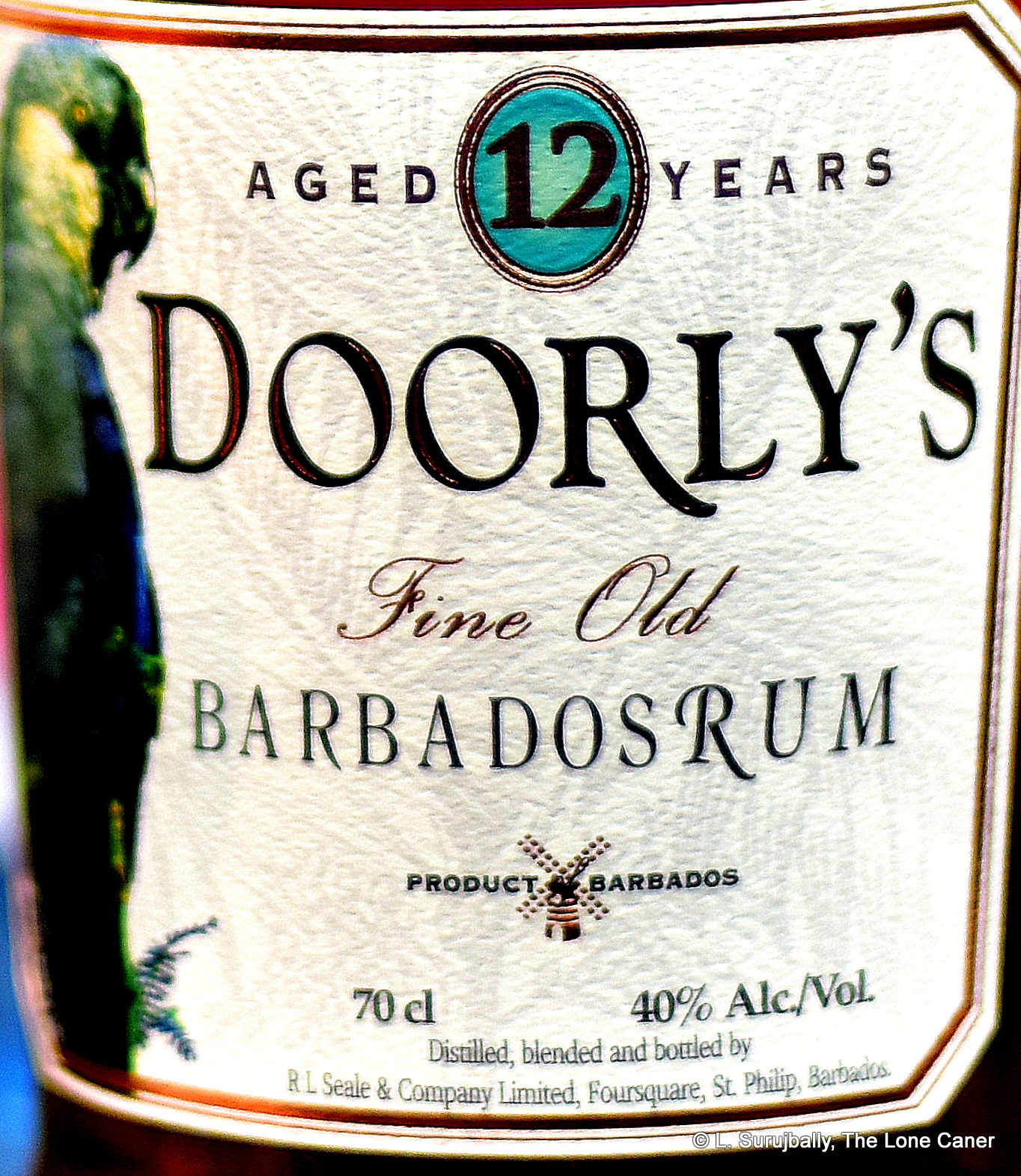 I think that a lot of how you approach this rum and finally rate it will depend on where you stand regarding rums as a whole, and where you are in your personal journey. You like the Jamaican and Guyanese, or high power whites, or 55% agricoles? This might strike you as subtler, quieter, perhaps even bland. Prefer cask strength rums made by the indies, or Foursquare themselves? This one is likely to leave you frustrated at the untapped potential that never quite emerges. On the other hand, if growling ABV monsters and fierce pungency are not your thing, it would probably appeal in spades, be deemed a damned fine rum — and indeed, it
I think that a lot of how you approach this rum and finally rate it will depend on where you stand regarding rums as a whole, and where you are in your personal journey. You like the Jamaican and Guyanese, or high power whites, or 55% agricoles? This might strike you as subtler, quieter, perhaps even bland. Prefer cask strength rums made by the indies, or Foursquare themselves? This one is likely to leave you frustrated at the untapped potential that never quite emerges. On the other hand, if growling ABV monsters and fierce pungency are not your thing, it would probably appeal in spades, be deemed a damned fine rum — and indeed, it